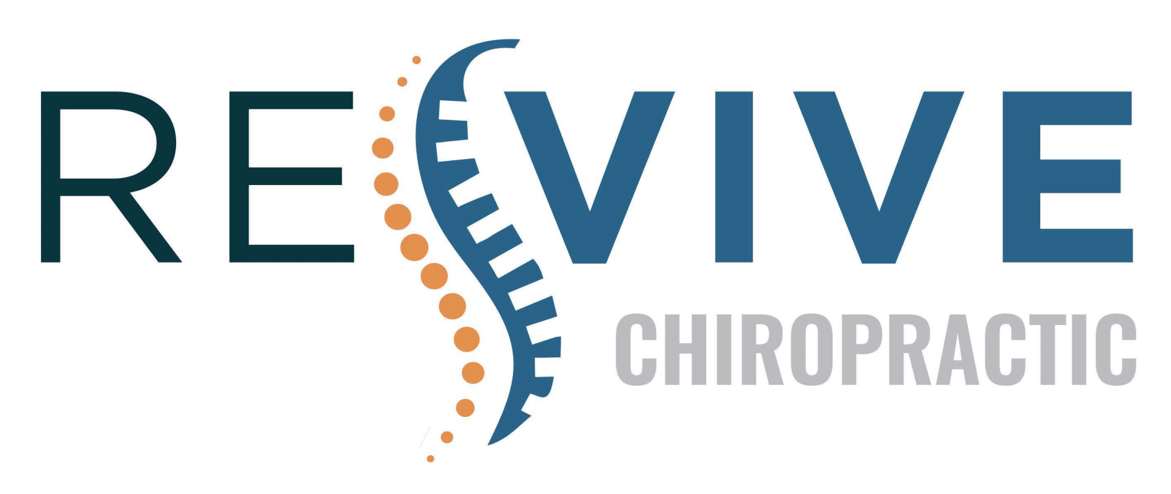You know how essential mobility is for your daily life, yet many overlook the importance of routine care in maintaining it. By integrating regular assessments and targeted exercises into your schedule, you can enhance not just flexibility but also overall strength. This proactive approach doesn't just prevent injuries; it promotes a more active lifestyle that keeps you independent. What's the first step you can take to access your potential for greater mobility? The answer might surprise you and could lead to lasting changes.
The Importance of Mobility
Recognizing the importance of mobility can transform your daily life. You mightn't realize it, but your ability to move freely affects almost every aspect of your routine. Whether it's getting out of bed, playing with your kids, or simply walking to the store, mobility enhances your overall quality of life.
When you prioritize movement, you empower yourself to seize opportunities, engage in social activities, and maintain independence. Imagine waking up each morning feeling energized and ready to tackle the day. Improved mobility plays a vital role in achieving that. It allows you to participate in activities you love, reduces the risk of falls and injuries, and promotes better physical health.
You'll find that with increased movement, your mood lifts, and you feel more connected to your surroundings. Moreover, embracing mobility helps you build endurance and strength. Regular movement keeps your muscles engaged and your joints flexible.
This isn't just about exercise; it's about incorporating movement into your everyday life. Even small changes, like taking the stairs or walking during breaks, can make a significant difference. Ultimately, recognizing the importance of mobility isn't just about physical capability; it's about enhancing your entire lifestyle.
When you commit to staying active, you'll discover a newfound sense of freedom and confidence. So, take the first step towards a more mobile life—your future self will thank you for it.
Benefits of Routine Care
When you prioritize routine care, you enhance your joint function and keep your body moving smoothly.
This proactive approach not only helps you stay limber but also incorporates injury prevention strategies that protect you from setbacks.
Enhanced Joint Function
Routine care considerably enhances joint function, allowing you to move with greater ease and flexibility. By engaging in regular check-ups and physical therapy, you can maintain ideal joint health. This proactive approach helps in identifying and addressing minor issues before they escalate, ensuring your joints remain mobile and pain-free.
Incorporating exercises aimed at strengthening the muscles around your joints is essential. These targeted workouts not only improve stability but also increase your range of motion. You'll find that with consistent effort, activities that once felt challenging become more manageable.
Moreover, routine care includes proper nutrition, which plays an important role in joint health. A balanced diet rich in anti-inflammatory foods can help reduce stiffness and promote lubrication in your joints. Staying hydrated is equally important, as it aids in maintaining the elasticity of cartilage, further enhancing joint function.
Finally, routine assessments allow healthcare professionals to tailor a personalized care plan for you. By understanding your unique needs, they can recommend specific treatments or exercises that align with your lifestyle. This customized approach empowers you to achieve and sustain enhanced joint function, enriching your overall quality of life.
Injury Prevention Strategies
Regular check-ups can greatly reduce your risk of injury by identifying potential issues before they become serious problems. During these visits, your healthcare provider can assess your body mechanics, flexibility, and strength, pinpointing any areas that might lead to injury.
For instance, if you have tight muscles or imbalances, they can recommend specific stretches or exercises to address these concerns. Incorporating routine care means you're also more likely to stay on top of vaccinations and overall health, which can prevent illnesses that might limit your mobility.
It's important to communicate any pain or discomfort you feel during your activities, as these could be early warning signs of injury. Additionally, your provider can help you develop a personalized fitness plan tailored to your needs and abilities, ensuring you build strength safely.
This proactive approach not only enhances your physical performance but also boosts your confidence in daily activities.
Stretching for Flexibility
Stretching is key to improving your flexibility and overall mobility.
By incorporating different types of stretches into your routine, you can enhance your movement and reduce the risk of injury.
Let's explore some effective stretching techniques and tips to help you get started.
Importance of Stretching
Flexibility plays an essential role in your overall mobility and daily function. Stretching regularly helps maintain and improve this flexibility, which can make everyday movements easier and more efficient.
When you stretch, you increase your range of motion in joints and muscles, allowing you to perform activities with greater ease. This is especially important as you age, as flexibility tends to decline over time.
Incorporating stretching into your routine can also reduce the risk of injuries. Tight muscles and joints are more prone to strains and tears, so keeping them flexible can help prevent these issues.
Additionally, stretching can alleviate muscle tension, promoting relaxation and reducing stress levels.
You might find that stretching enhances your athletic performance as well. Whether you're running, dancing, or engaging in any physical activity, improved flexibility can lead to better coordination and balance.
Types of Stretches
There are various types of stretches that can greatly enhance your flexibility and overall mobility. Each type serves a unique purpose, so it's vital to incorporate them into your routine.
Static stretching involves holding a stretch for a certain period, typically 15 to 60 seconds. This type helps lengthen your muscles and improve flexibility over time. Think about stretching your hamstrings or quadriceps after a workout; it's a great way to cool down.
Dynamic stretching, on the other hand, involves moving parts of your body through a full range of motion. This is often done before a workout to warm up your muscles and prepare your body for activity. Examples include leg swings and arm circles, which increase blood flow and flexibility.
Ballistic stretching uses momentum to force a body part beyond its normal range of motion. While it can be effective for athletes, it's important to approach this type with caution to avoid injury.
Finally, proprioceptive neuromuscular facilitation (PNF) combines stretching and contracting muscles. It's often done with a partner and is effective for increasing flexibility.
Stretching Routine Tips
Incorporating a well-structured stretching routine into your daily life can greatly boost your flexibility and overall mobility. To get started, set aside just ten minutes each day. Consistency is key, so pick a time that works best for you—whether it's in the morning, during lunch, or before bed.
Begin with dynamic stretches to warm up your muscles, like arm circles or leg swings. After this, focus on static stretches, holding each position for 15 to 30 seconds. Target major muscle groups, including your hamstrings, quadriceps, and shoulders. Remember to breathe deeply; this helps relax your muscles and enhances your stretch.
Listen to your body. If you feel pain, ease off the stretch. You should only feel mild discomfort. To maximize the benefits, incorporate a variety of stretches into your routine to avoid monotony and guarantee balanced muscle development.
Finally, don't forget to hydrate. Water helps maintain muscle elasticity.
Strengthening Exercises
Strengthening exercises are essential for enhancing mobility and overall physical function. When you commit to a routine that includes these exercises, you'll notice improvements in your strength, balance, and coordination. This doesn't just help with daily activities; it can also reduce the risk of injuries and chronic conditions.
To get started, focus on major muscle groups such as your legs, core, and upper body. Simple exercises like squats, lunges, and push-ups can be highly effective. You don't need fancy equipment; your body weight is often enough. If you prefer, you can incorporate resistance bands or light weights to increase the challenge.
Aim for two to three sessions each week, allowing your muscles time to recover between workouts. Start with one set of 8-12 repetitions for each exercise, gradually increasing the weight or resistance as you grow stronger. Consistency is key, so find a time that works best for you and stick to it.
Additionally, incorporate functional movements that mimic daily tasks. These can include standing up from a chair or climbing stairs, which help you build strength relevant to your everyday life.
Don't forget to listen to your body. If something feels off or causes pain, adjust your form or reduce the intensity.
Regular Health Check-Ups
Regular health check-ups play an essential role in maintaining your overall well-being. These visits to your healthcare provider allow you to assess your current health status, catch potential issues early, and stay informed about your body's needs.
Regular check-ups can help identify risk factors for chronic diseases, enabling you to take proactive steps to mitigate them.
During these appointments, your healthcare provider will typically perform various assessments, including blood pressure checks, cholesterol screenings, and blood tests. These tests are vital as they can reveal underlying conditions that you mightn't be aware of.
By addressing these issues early on, you can prevent them from developing into more serious health problems down the line.
Moreover, check-ups offer you an invaluable opportunity to discuss any concerns or changes you've noticed in your health. Whether you've experienced unusual fatigue, pain, or other symptoms, sharing these with your provider guarantees they can tailor their advice specifically to you.
Don't underestimate the importance of vaccinations and preventive measures discussed during these visits. Staying up-to-date on vaccinations protects not just you but also those around you.
Tailored Mobility Programs
Tailored mobility programs are designed to meet your unique needs, guaranteeing that you can move with greater ease and confidence. These programs take into account your specific physical condition, lifestyle, and personal goals. By working closely with healthcare professionals, you'll receive a customized plan that focuses on your strengths and addresses any limitations.
First, a thorough assessment of your mobility is crucial. This includes evaluating your range of motion, strength, balance, and coordination. Once your current capabilities are understood, the program can be adapted to include exercises and activities that enhance your mobility. For instance, if you struggle with flexibility, stretching routines might be prioritized. If building strength is your goal, resistance training could be incorporated.
In addition to exercise, tailored mobility programs often incorporate education on body mechanics and posture. You'll learn how to move safely and efficiently, reducing the risk of injury. This knowledge empowers you to make better choices in your daily activities, contributing to your overall well-being.
Progress tracking is another important aspect of these programs. Regular check-ins allow you and your healthcare team to assess your improvements and adjust your plan as necessary. This guarantees that you remain challenged while also preventing burnout or frustration.
Ultimately, tailored mobility programs provide a holistic approach to enhancing your movement. With a focus on personalization and continuous support, you'll find yourself moving more freely and confidently, ready to tackle whatever life throws your way.
Lifestyle Changes for Improvement
Improving your mobility goes beyond tailored programs; it also involves making strategic lifestyle changes that support your overall movement goals. One of the first steps you can take is to incorporate regular physical activity into your daily routine.
Whether it's a brisk walk, yoga, or strength training, find activities you enjoy, and make them a priority. Consistency is key, so aim for at least 150 minutes of moderate exercise each week.
Nutrition plays an essential role in your mobility as well. Fuel your body with a balanced diet rich in fruits, vegetables, lean proteins, and whole grains. Staying hydrated is essential, too, as dehydration can lead to fatigue and stiffness.
Consider reducing processed foods high in sugar and unhealthy fats, which can impact your energy levels and overall health.
Don't forget the importance of rest and recovery. Give your body time to recover after workouts, and prioritize sleep to help your muscles repair and rejuvenate. Stretching and flexibility exercises can also improve your range of motion and prevent injuries.
Lastly, be mindful of your posture throughout the day. Whether you're sitting at a desk or standing, maintaining good posture can prevent strain and discomfort, allowing you to move more freely.
Conclusion
Incorporating routine care into your life is key to releasing greater mobility and enhancing your quality of life. By focusing on regular assessments, personalized exercise, and education about body mechanics, you can confidently engage in daily activities and maintain your independence. Embrace stretching and strengthening exercises, along with regular health check-ups, to create a tailored mobility program. With these proactive steps, you'll not only reduce your risk of injury but also enjoy a healthier, more active lifestyle.



